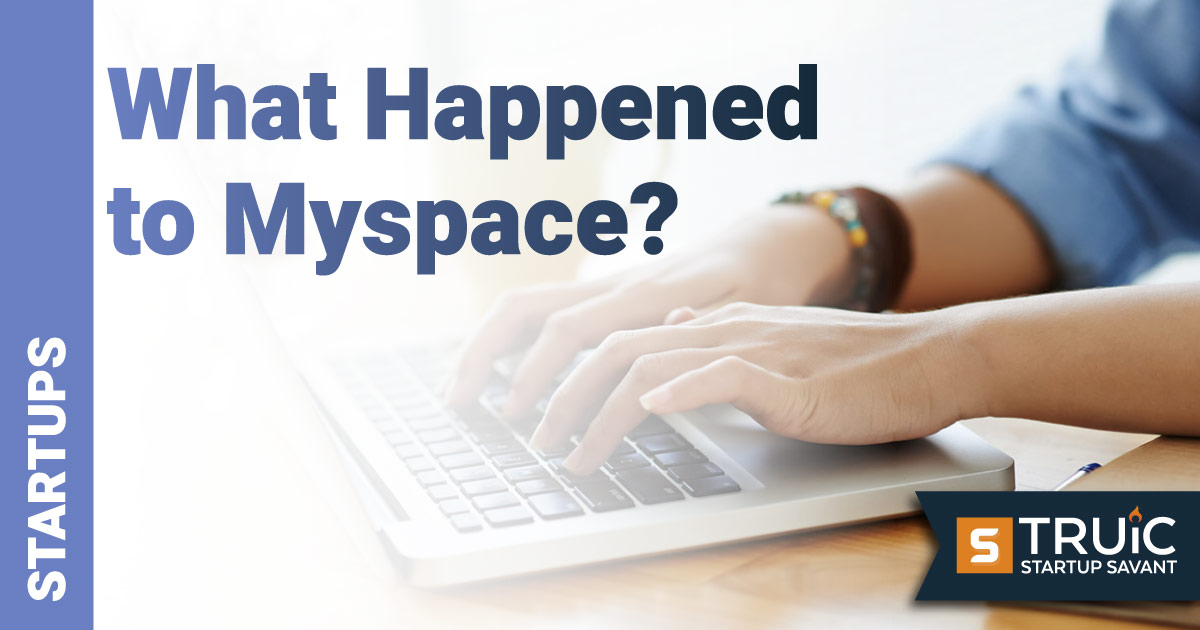What Happened to Myspace?
The Rise and Fall of the Social Networking Platform Myspace

Last Updated: By TRUiC Team
We often think about Facebook as being the pioneer in social media, but six months before Facebook was even conceived in Zuckerberg's mind, Myspace was dominating the social media space. Then, it just seemed to disappear, at least in the minds of its original group of voracious fans.
Myspace's three-year reign in the online social lives of people across the world played more of a role in the digital world we know today than we might think. So, where did Myspace go? What was behind its fall, and what did we learn?
Myspace and the Birth of Social Media
The birth of Myspace started with Chris DeWolfe. When DeWolfe sold his marketing agency to a company called eUniverse, he met Brad Greenspan and Tom Anderson. As the name suggests, eUniverse was already involved in the online space — the company sold a wide range of products online and built up a mailing list of over 20 million people.
At this point, DeWolfe already owned the domain MySpace.Com (a later iteration of the name's stylization would drop the upper case S). At that time, he was using the domain to sell escooters. When the social networking site Friendster started to become more popular, DeWolfe and his colleagues saw an opportunity. Combining the elements of what they had learned at eUniverse and the popularity (and failings) of the Friendster platform, in August 2003, the Myspace concept was born.
The early days of Myspace were very simple: the team took the most popular features from Friendster and tweaked them to make them better. Then, they looked at what wasn't working on that platform, and consciously did the opposite. One example is how Friendster's significant content moderation frustrated users. Myspace decided to only moderate hate speech and extreme nudity.
To add to the scope of users' freedoms, Myspace offered the opportunity to customize profiles using basic HTML, and no one had to use their real names. After beta testing within eUniverse, the team delivered an operational product to the market within 10 days.
All of these freedoms made Myspace very popular with the 16-25 age group. It constantly added new features to give users the opportunity to publish a bit of everything — videos, music, and photographs. By June 2006, Myspace had become the most visited social networking site in the world and the most visited site overall in the United States, even beating out Google during that time.
The surging popularity of the platform left an indelible mark on the landscape of social media: people clearly wanted to put themselves out there. Online interactions provided an alternate universe for users — it was gold.
A New Era for Social Networking
This boom of Myspace in 2006 coincided with an important business decision by its founders. The Rupert Murdoch-led conglomerate News Corp purchased Myspace (and its parent company) for $580 million around that time. A price tag that had more to do with its possible future value and significant competitor interest than any real-world valuation.
This sale and News Corp's desire to earn back their investment as quickly as possible would lead to Myspace's ultimate downfall.
Shortly after the acquisition, News Corp decided to ramp up advertising revenue on Myspace, and they struck one of the world's biggest advertising deals with Google. The $900 million agreement meant that the search engine giant would have exclusive access to data on Myspace for the purposes of advertising for its own clients. Suddenly, Myspace users were inundated with adverts while using the platform. These adverts negatively impacted user experience, and a newcomer was on the rise — Facebook.
Competition, Rebranding, and a Legacy
By 2008, Facebook was outranking Myspace on Alexa. It offered a clean, easy-to-use experience to the Myspace demographic, and when they eventually included ads, they learned from the News Corp/Google blunder and used targeted ads only.
That being said, it certainly was not just excessive advertising that led to the plummet in Myspace's popularity. Negative publicity around how Myspace's anonymous functionality was empowering sex offenders and promoting online bullying peaked when a 13-year-old girl committed suicide after Myspace bullying from an anonymous troll. Myspace's tech was also failing, with numerous bugs sneaking into the framework which demolished any positive user experience that had remained.
In 2013, singer Justin Timberlake purchased Myspace for $35 million. The platform attempted to rebrand as primarily a music-sharing site, but although most profiles are still accessible today, Myspace has all but been abandoned as an active social platform.
Although Myspace had a very brief period of success, it did lay the groundwork for the social media industry we know today. The initial popularity of the platform showed the world that online interaction was something that the world wanted. The internet was already connecting people and that needed to move to a social level outside of the dark, creepy chat rooms of the time. Myspace was also an important lesson in online safety and, although users initially loved the anonymity option, we soon realized how dangerous that aspect could become.
The advertising world learned from Myspace's eventual downfall too — if you're going to monetize a user's data, you need to ensure that there is value provided at both ends of the transaction.
Although Myspace may not still be active today, its legacy and the lessons learned certainly are, and, as such, it will always remain a large part of the foundation our social media experience was built on.


